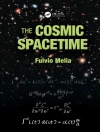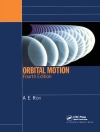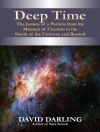Mars is about one-eighth the mass of the Earth and it may provide an analogue of what the Earth was like when it was at such an early stage of accretion. The fur- ther growth of the Earth was sustained by major collisions with planetesimals and planets such as that which resulted in the formation ofthe Earth’s moon (Hartmann and Davis, 1975; Cameron and Ward, 1976; Wetherill, 1986; Cameron and Benz, 1991). This late accretionary history, which lasted more than 50 Myr in the case of the Earth (Halliday, 2000a, b), appears to have been shorter and less catastrophic in the case of Mars (Harper et ai. , 1995; Lee and Halliday, 1997). In this article we review the basic differences between the bulk composition of Mars and the Earth and the manner in which this plays into our understanding of the timing and mechanisms of accretion and core formation. We highlight some of the evidence for early cessation of major collisional growth on Mars. Finally, we reevaluate the isotopic evidence that Mars differentiated quickly. Fundamental differences between the composition of Mars and that of other terrestrial planets are apparent from the planet’s slightly lower density and from the compositions of Martian meteorites. The low density is partially explicable if there is a greater proportion of more volatile elements.
Johannes Geiss & W.K. Hartmann
Chronology and Evolution of Mars [PDF ebook]
Proceedings of an ISSI Workshop, 10-14 April 2000, Bern, Switzerland
Chronology and Evolution of Mars [PDF ebook]
Proceedings of an ISSI Workshop, 10-14 April 2000, Bern, Switzerland
¡Compre este libro electrónico y obtenga 1 más GRATIS!
Idioma Inglés ● Formato PDF ● ISBN 9789401710350 ● Editor Johannes Geiss & W.K. Hartmann ● Editorial Springer Netherlands ● Publicado 2013 ● Descargable 3 veces ● Divisa EUR ● ID 4597101 ● Protección de copia Adobe DRM
Requiere lector de ebook con capacidad DRM












